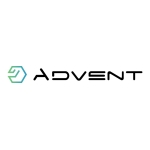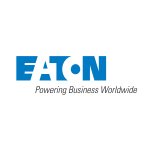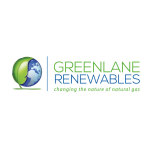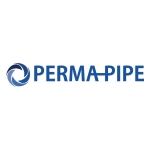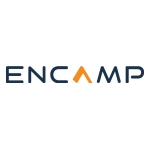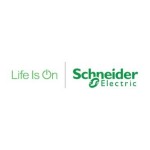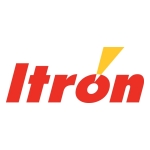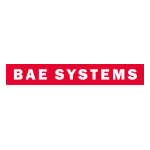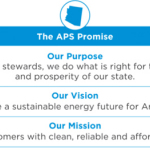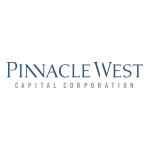HOUSTON--(BUSINESS WIRE)--Cheniere Energy, Inc. (“Cheniere”) (NYSE American: LNG) today announced its financial results for fourth quarter and full year 2020.

HIGHLIGHTS
-
Consolidated Adjusted EBITDA1 of $1.05 billion for fourth quarter 2020 and $3.96 billion for full year 2020, an increase of 35% compared to full year 2019 and within the full year 2020 guidance range. Distributable Cash Flow1 of approximately $330 million for fourth quarter 2020 and $1.35 billion for full year 2020, an increase of approximately 75% compared to full year 2019 and above the full year 2020 guidance range. Net loss2 of $194 million, or $0.77 per share, for fourth quarter 2020 and net loss of $85 million, or $0.34 per share, for full year 2020. Fourth quarter net loss was negatively impacted by non-cash changes in fair value of commodity derivatives. Full year net loss was also negatively impacted by non-cash changes in fair value of commodity derivatives, as well as certain other non-operating losses.
-
Increasing full year 2021 Consolidated Adjusted EBITDA guidance to $4.1 - $4.4 billion and full year 2021 Distributable Cash Flow guidance to $1.4 - $1.7 billion based on strong execution and improved market conditions.
-
Prepaid $100 million of outstanding borrowings under the Cheniere Term Loan Facility with available cash in fourth quarter 2020, in line with previously announced capital allocation priorities. During full year 2020, allocated over $650 million to debt reduction and capital returns, including redemption of $300 million principal amount of the CCH Holdco convertible notes in cash in March, prepayments totaling $200 million of borrowings under the Cheniere Term Loan Facility, and repurchases of 2.9 million shares of common stock for $155 million.
-
Entered into mid-term LNG sales agreements during fourth quarter 2020 for portfolio volumes aggregating over four million tonnes of LNG with multiple counterparties and with contract tenors ranging from five to approximately 11 years, on both free on board (“FOB”) and delivered ex-ship (“DES”) terms.
-
Commenced shipment of LNG commissioning cargoes from Train 3 of the CCL Project (defined below) in December as part of the commissioning process. A total of 22 TBtu of commissioning LNG has been exported from Train 3 as of February 19, 2021, and the project remains on track to achieve substantial completion in first quarter 2021.
-
Loaded and shipped the first two LNG cargoes under the 25-year LNG Sale and Purchase Agreement (“SPA”) with CPC Corporation, Taiwan in December. The cargoes were delivered in first quarter 2021.
CEO COMMENT
“After a year in which the unprecedented became ordinary course, I am extremely proud to report fourth quarter and full year 2020 financial results that place us solidly within our original, unchanged Consolidated Adjusted EBITDA guidance range and above our Distributable Cash Flow guidance range for the year,” said Jack Fusco, Cheniere’s President and Chief Executive Officer. “We accomplished this while successfully managing a full spectrum of challenges last year, from a global health crisis and its wide-ranging effects, to record low LNG market pricing, and two major hurricanes making landfall near our infrastructure. The results we reported today once again prove the resilience, stability, and reliability of our business through commodity cycles.”
“I am pleased to report the recent winter storm and the resulting effect on electricity and other utilities in the Gulf Coast had no material impact on our assets or operations. We worked closely with state and local officials, suppliers, customers, and other stakeholders to mitigate the impact on our operations through the event while providing critically needed natural gas back into the system to help restore services for human needs.”
“I want to thank the entire Cheniere team for its tireless efforts to adapt to new circumstances and to rise to new challenges, excelling within them and helping us reinforce our reputation within the LNG industry for operational excellence and within the financial community for reliable execution and delivering on our promises.”
“I am confident we can continue to execute in 2021, and many tailwinds are present today. We are in the final stages of commissioning Train 3 at Corpus Christi and look forward to placing that project into service in the coming weeks. Additionally, the global LNG market has strengthened significantly since our last quarterly update, improving our outlook for the remainder of the year. Today we are raising our 2021 financial guidance and are confident in our ability to once again deliver reliable financial results this year and to progress on commercializing additional portfolio volumes as well as Corpus Christi Stage 3.”
2021 REVISED FULL YEAR FINANCIAL GUIDANCE
|
|
|
|
|
Previous
|
|
Revised
|
Consolidated Adjusted EBITDA1
|
$
|
3.9
|
|
-
|
|
$
|
4.2
|
|
|
$
|
4.1
|
|
-
|
|
$
|
4.4
|
|
Distributable Cash Flow1
|
$
|
1.2
|
|
-
|
|
$
|
1.5
|
|
|
$
|
1.4
|
|
-
|
|
$
|
1.7
|
|
SUMMARY AND REVIEW OF FINANCIAL RESULTS
|
(in millions, except LNG data)
|
Fourth Quarter
|
|
Full Year
|
|
2020
|
|
2019
|
|
% Change
|
|
2020
|
|
2019
|
|
% Change
|
Revenues
|
$
|
2,787
|
|
|
$
|
3,007
|
|
|
(7
|
)%
|
|
$
|
9,358
|
|
|
$
|
9,730
|
|
|
(4
|
)%
|
Net income (loss)2
|
$
|
(194
|
)
|
|
$
|
939
|
|
|
nm
|
|
$
|
(85
|
)
|
|
$
|
648
|
|
|
nm
|
Consolidated Adjusted EBITDA1
|
$
|
1,052
|
|
|
$
|
987
|
|
|
7
|
%
|
|
$
|
3,961
|
|
|
$
|
2,946
|
|
|
34
|
%
|
LNG exported:
|
|
|
|
|
|
|
|
|
|
|
|
Number of cargoes
|
130
|
|
|
130
|
|
|
—
|
%
|
|
391
|
|
|
429
|
|
|
(9
|
)%
|
Volumes (TBtu)
|
461
|
|
|
462
|
|
|
—
|
%
|
|
1,381
|
|
|
1,516
|
|
|
(9
|
)%
|
LNG volumes loaded (TBtu)
|
464
|
|
|
457
|
|
|
2
|
%
|
|
1,384
|
|
|
1,514
|
|
|
(9
|
)%
|
Net loss increased during fourth quarter 2020 as compared to fourth quarter 2019 primarily due to decreased operating income and decreased income tax benefit. Operating income decreased primarily due to a decrease in total margins3, primarily attributable to increased non-cash losses from changes in fair value of commodity and foreign exchange (“FX”) derivatives, principally related to the impact of commodity curve shifts on our long-term Integrated Production Marketing (“IPM”) agreements for the purchase of natural gas and on our forward sales of LNG. LNG volumes recognized in income and margins per MMBtu of LNG delivered to customers were comparable for fourth quarter 2020 and fourth quarter 2019. Tax benefit decreased during fourth quarter 2020 due to a nonrecurrence of the release of a significant portion of the valuation allowance previously recorded against our deferred tax assets in 2019.
During fourth quarter 2020, net loss was negatively impacted by approximately $515 million related to non-cash changes in fair value of commodity and FX derivatives, primarily related to the impact of commodity curve shifts on our IPM agreements for the purchase of natural gas and on our forward sales of LNG.
Our IPM agreements and certain gas supply agreements qualify as derivatives, requiring mark-to-market (“MTM”) accounting. From period to period, we will experience non-cash gains and losses as price movements occur in the underlying commodity curves related to these forward purchases of natural gas. The long-term duration and international price basis of our IPM agreements make them particularly susceptible to fluctuations in fair market value from period to period. While operationally we seek to eliminate commodity risk by matching our natural gas purchases and LNG sales on the same pricing index, our long-term LNG SPAs do not currently qualify for MTM accounting, meaning that the fair market value impact of only one side of the transaction is recognized on our financial statements until the delivery of natural gas and sale of LNG occurs. Our IPM agreements are designed to provide stable margins on purchases of natural gas and sales of LNG over the life of the agreement and have a fixed fee component, similar to that of LNG sold under our long-term, fixed fee LNG SPAs.
Net loss increased during full year 2020 as compared to full year 2019 primarily due to increased tax expense, increased interest expense and interest rate derivative loss, increased loss on modification or extinguishment of debt, and increased loss on our equity method investments, partially offset by an increase in operating income. Operating income increased due to an increase in total margins, partially offset by increased operating costs and expenses primarily due to additional Trains in operation and costs incurred in response to the COVID-19 pandemic. Total margins increased primarily due to increased LNG sold including both physical and cancelled cargoes, primarily as a result of additional Trains in operation, partially offset by increased non-cash losses from changes in fair value of commodity and FX derivatives. Margins per MMBtu of LNG delivered to customers increased slightly during full year 2020 as compared to full year 2019, primarily due to an increase in the proportion of volumes sold under higher-margin long-term contracts, partially offset by a decrease in market margins for short-term cargoes sold.
Consolidated Adjusted EBITDA increased $65 million, or 7%, during fourth quarter 2020 as compared to fourth quarter 2019, primarily due to accelerated recognition of revenues for cargoes cancelled during fourth quarter 2020 that would have been delivered during first quarter 2021 and a slight decrease in selling, general and administrative expense.
Consolidated Adjusted EBITDA increased $1.02 billion, or 34%, during full year 2020 as compared to full year 2019, primarily due to increased LNG sold including both physical and cancelled cargoes, primarily as a result of additional Trains in operation, as well as slightly increased margins per MMBtu of LNG delivered to customers as detailed above, partially offset by increased operating costs and expenses primarily due to additional Trains in operation.
During fourth quarter and full year 2020, we recognized $38 and $969 million, respectively, in revenues associated with LNG cargoes cancelled by customers, of which $38 million would have been recognized subsequent to December 31, 2020, if the cargoes were lifted pursuant to the customers’ delivery schedules. LNG revenues during fourth quarter 2020 excluded $47 million that would have been recognized during the quarter if the cargoes had been lifted, as these revenues were recognized during third quarter 2020 when cancellations were received. Excluding the impact of cargo cancellations related to periods subsequent to December 31, 2020 and those received in prior periods for the current periods, our total revenues would have been $2.80 and $9.32 billion for fourth quarter and full year 2020, respectively.
Share-based compensation expenses included in income totaled $26 and $110 million for fourth quarter and full year 2020, respectively, compared to $37 and $131 million for the comparable 2019 periods.
Our financial results are reported on a consolidated basis. Our ownership interest in Cheniere Energy Partners, L.P. (“Cheniere Partners”) (NYSE American: CQP) as of December 31, 2020 consisted of 100% ownership of the general partner and a 48.6% limited partner interest.
BALANCE SHEET MANAGEMENT
Capital Resources
As of December 31, 2020, we had cash and cash equivalents of $1.6 billion on a consolidated basis, of which $1.2 billion was held by Cheniere Partners. In addition, we had current restricted cash of $449 million, $1.13 billion of available commitments under our Revolving Credit Facility, $767 million of available commitments under the Cheniere Corpus Christi Holdings, LLC Working Capital Facility, $750 million of available commitments under Cheniere Partners’ credit facilities, and $787 million of available commitments under the Sabine Pass Liquefaction, LLC (“SPL”) Working Capital Facility.
Key Financial Transactions and Updates
In February 2021, SPL entered into a note purchase agreement with Allianz Global Investors GmbH to issue an aggregate principal amount of $147 million of 2.95% Senior Secured Notes due 2037. The notes are expected to be issued in December 2021, and net proceeds are expected to be used to refinance a portion of SPL’s outstanding Senior Secured Notes due 2022. The Senior Secured Notes due 2037 will be fully amortizing, with a weighted average life of over 10 years.
LIQUEFACTION PROJECTS UPDATE
As of February 19, 2021, approximately 1,425 cumulative LNG cargoes totaling over 95 million tonnes of LNG have been produced, loaded and exported from our liquefaction projects.
Construction Progress as of December 31, 2020
|
|
CCL Project
|
|
SPL Project
|
|
Train 3
|
|
Train 6
|
Project Status
|
Commissioning
|
|
Under Construction
|
Project Completion Percentage
|
99.6% (1)
|
|
77.6% (2)
|
Expected Substantial Completion
|
1Q 2021
|
|
2H 2022
|
(1) Engineering 100.0% complete, procurement 100.0% complete, and construction 99.0% complete
(2) Engineering 99.0% complete, procurement 99.9% complete, and construction 49.2% complete
Liquefaction Projects Overview
SPL Project
Through Cheniere Partners, we operate five natural gas liquefaction Trains and are constructing one additional Train for a total production capacity of approximately 30 million tonnes per annum (“mtpa”) of LNG at the Sabine Pass LNG terminal (the “SPL Project”).
CCL Project
We operate two Trains and are commissioning one additional Train for a total production capacity of approximately 15 mtpa of LNG near Corpus Christi, Texas (the “CCL Project”).
Corpus Christi Stage 3
We are developing an expansion adjacent to the CCL Project for up to seven midscale Trains with an expected total production capacity of approximately 10 mtpa of LNG (“Corpus Christi Stage 3”). We expect to commence construction of the Corpus Christi Stage 3 project upon, among other things, entering into an engineering, procurement, and construction contract and additional commercial agreements, and obtaining adequate financing.
INVESTOR CONFERENCE CALL AND WEBCAST
We will host a conference call to discuss our financial and operating results for the fourth quarter and full year 2020 on Wednesday, February 24, 2021, at 11 a.m. Eastern time / 10 a.m. Central time. A listen-only webcast of the call and an accompanying slide presentation may be accessed through our website at www.cheniere.com. Following the call, an archived recording will be made available on our website.
| ___________________________ |
1
|
|
Non-GAAP financial measure. See “Reconciliation of Non-GAAP Measures” for further details.
|
2
|
|
Net income (loss) as used herein refers to Net income (loss) attributable to common stockholders on our Consolidated Statements of Operations.
|
3
|
|
Total margins as used herein refers to total revenues less cost of sales.
|
About Cheniere
Cheniere Energy, Inc. is the leading producer and exporter of liquefied natural gas (LNG) in the United States, reliably providing a clean, secure, and affordable solution to the growing global need for natural gas. Cheniere is a full-service LNG provider, with capabilities that include gas procurement and transportation, liquefaction, vessel chartering, and LNG delivery. Cheniere has one of the largest liquefaction platforms in the world, consisting of the Sabine Pass and Corpus Christi liquefaction facilities on the U.S. Gulf Coast, with expected total production capacity of approximately 45 million tonnes per annum of LNG operating or under construction. Cheniere is also pursuing liquefaction expansion opportunities and other projects along the LNG value chain. Cheniere is headquartered in Houston, Texas, and has additional offices in London, Singapore, Beijing, Tokyo, and Washington, D.C.
For additional information, please refer to the Cheniere website at www.cheniere.com and Annual Report on Form 10-K for the year ended December 31, 2020, filed with the Securities and Exchange Commission.
Use of Non-GAAP Financial Measures
In addition to disclosing financial results in accordance with U.S. GAAP, the accompanying news release contains non-GAAP financial measures. Consolidated Adjusted EBITDA and Distributable Cash Flow are non-GAAP financial measures that we use to facilitate comparisons of operating performance across periods. These non-GAAP measures should be viewed as a supplement to and not a substitute for our U.S. GAAP measures of performance and the financial results calculated in accordance with U.S. GAAP and reconciliations from these results should be carefully evaluated.
Non-GAAP measures have limitations as an analytical tool and should not be considered in isolation or in lieu of an analysis of our results as reported under GAAP and should be evaluated only on a supplementary basis.
Forward-Looking Statements
This press release contains certain statements that may include “forward-looking statements” within the meanings of Section 27A of the Securities Act of 1933 and Section 21E of the Securities Exchange Act of 1934. All statements, other than statements of historical or present facts or conditions, included herein are “forward-looking statements.” Included among “forward-looking statements” are, among other things, (i) statements regarding Cheniere’s financial and operational guidance, business strategy, plans and objectives, including the development, construction and operation of liquefaction facilities, (ii) statements regarding expectations regarding regulatory authorizations and approvals, (iii) statements expressing beliefs and expectations regarding the development of Cheniere’s LNG terminal and pipeline businesses, including liquefaction facilities, (iv) statements regarding the business operations and prospects of third parties, (v) statements regarding potential financing arrangements, (vi) statements regarding future discussions and entry into contracts, (vii) statements relating to the amount and timing of share repurchases, and (viii) statements regarding the COVID-19 pandemic and its impact on our business and operating results. Although Cheniere believes that the expectations reflected in these forward-looking statements are reasonable, they do involve assumptions, risks and uncertainties, and these expectations may prove to be incorrect. Cheniere’s actual results could differ materially from those anticipated in these forward-looking statements as a result of a variety of factors, including those discussed in Cheniere’s periodic reports that are filed with and available from the Securities and Exchange Commission. You should not place undue reliance on these forward-looking statements, which speak only as of the date of this press release. Other than as required under the securities laws, Cheniere does not assume a duty to update these forward-looking statements.
(Financial Tables and Supplementary Information Follow)
LNG VOLUME SUMMARY
During fourth quarter and full year 2020, 130 and 391 LNG cargoes, respectively, were exported from our liquefaction projects, two of which were commissioning cargoes. Eight cargoes exported from our liquefaction projects and sold on a delivered basis were in transit as of December 31, 2020.
The following table summarizes the volumes of operational and commissioning LNG that were loaded from our liquefaction projects and for which the financial impact was recognized on our Consolidated Financial Statements during fourth quarter and full year 2020:
|
Fourth Quarter 2020
|
|
Full Year 2020
|
(in TBtu)
|
Operational
|
|
Commissioning
|
|
Operational
|
|
Commissioning
|
Volumes loaded during the current period
|
458
|
|
|
|
6
|
|
|
1,378
|
|
|
6
|
|
Volumes loaded during the prior period but recognized during the current period
|
21
|
|
|
|
—
|
|
|
33
|
|
|
—
|
|
Less: volumes loaded during the current period and in transit at the end of the period
|
(26
|
)
|
|
|
(3
|
)
|
|
(26
|
)
|
|
(3
|
)
|
Total volumes recognized in the current period
|
453
|
|
|
|
3
|
|
|
1,385
|
|
|
3
|
|
In addition, during fourth quarter and full year 2020, we recognized the financial impact of 24 TBtu and 103 TBtu of LNG, respectively, on our Consolidated Financial Statements related to LNG cargoes sourced from third parties.
CARGO CANCELLATION REVENUE SUMMARY
The following table summarizes the timing impacts of revenue recognition related to cancelled cargoes on our revenues for fourth quarter and full year 2020 (in millions):
|
Fourth Quarter 2020
|
|
Full Year 2020
|
Total revenues
|
$
|
2,787
|
|
|
$
|
9,358
|
|
Impact of cargo cancellations recognized in the prior period for deliveries scheduled in the current period
|
47
|
|
|
—
|
|
Impact of cargo cancellations recognized in the current period for deliveries scheduled in subsequent periods
|
(38
|
)
|
|
(38
|
)
|
Total revenues excluding the timing impact of cargo cancellations
|
$
|
2,796
|
|
|
$
|
9,320
|
|
Cheniere Energy, Inc.
|
Consolidated Statements of Operations
|
(in millions, except per share data)(1)
|
|
|
|
|
|
|
|
(Unaudited)
|
|
|
|
|
|
Three Months Ended
|
|
Year Ended
|
|
December 31,
|
|
December 31,
|
|
2020
|
|
2019
|
|
2020
|
|
2019
|
Revenues
|
|
|
|
|
|
|
|
LNG revenues
|
$
|
2,688
|
|
|
$
|
2,871
|
|
|
$
|
8,924
|
|
|
$
|
9,246
|
|
Regasification revenues
|
67
|
|
|
67
|
|
|
269
|
|
|
266
|
|
Other revenues
|
32
|
|
|
69
|
|
|
165
|
|
|
218
|
|
Total revenues
|
2,787
|
|
|
3,007
|
|
|
9,358
|
|
|
9,730
|
|
|
|
|
|
|
|
|
|
Operating costs and expenses
|
|
|
|
|
|
|
|
Cost of sales (excluding items shown separately below)
|
1,866
|
|
|
1,321
|
|
|
4,161
|
|
|
5,079
|
|
Operating and maintenance expense
|
332
|
|
|
330
|
|
|
1,320
|
|
|
1,154
|
|
Development expense
|
1
|
|
|
3
|
|
|
6
|
|
|
9
|
|
Selling, general and administrative expense
|
78
|
|
|
88
|
|
|
302
|
|
|
310
|
|
Depreciation and amortization expense
|
233
|
|
|
233
|
|
|
932
|
|
|
794
|
|
Impairment expense and loss on disposal of assets
|
1
|
|
|
16
|
|
|
6
|
|
|
23
|
|
Total operating costs and expenses
|
2,511
|
|
|
1,991
|
|
|
6,727
|
|
|
7,369
|
|
|
|
|
|
|
|
|
|
Income from operations
|
276
|
|
|
1,016
|
|
|
2,631
|
|
|
2,361
|
|
|
|
|
|
|
|
|
|
Other income (expense)
|
|
|
|
|
|
|
|
Interest expense, net of capitalized interest
|
(351
|
)
|
|
(418
|
)
|
|
(1,525
|
)
|
|
(1,432
|
)
|
Loss on modification or extinguishment of debt
|
(2
|
)
|
|
(28
|
)
|
|
(217
|
)
|
|
(55
|
)
|
Interest rate derivative gain (loss), net
|
—
|
|
|
53
|
|
|
(233
|
)
|
|
(134
|
)
|
Other income (expense), net
|
3
|
|
|
13
|
|
|
(112
|
)
|
|
(25
|
)
|
Total other expense
|
(350
|
)
|
|
(380
|
)
|
|
(2,087
|
)
|
|
(1,646
|
)
|
|
|
|
|
|
|
|
|
Income (loss) before income taxes and non-controlling interest
|
(74
|
)
|
|
636
|
|
|
544
|
|
|
715
|
|
Income tax benefit (provision)
|
76
|
|
|
517
|
|
|
(43
|
)
|
|
517
|
|
Net income
|
2
|
|
|
1,153
|
|
|
501
|
|
|
1,232
|
|
Less: net income attributable to non-controlling interest
|
196
|
|
|
214
|
|
|
586
|
|
|
584
|
|
Net income (loss) attributable to common stockholders
|
$
|
(194
|
)
|
|
$
|
939
|
|
|
$
|
(85
|
)
|
|
$
|
648
|
|
|
|
|
|
|
|
|
|
Net income (loss) per share attributable to common stockholders—basic(2)
|
$
|
(0.77
|
)
|
|
$
|
3.70
|
|
|
$
|
(0.34
|
)
|
|
$
|
2.53
|
|
Net income (loss) per share attributable to common stockholders—diluted (2)
|
$
|
(0.77
|
)
|
|
$
|
3.34
|
|
|
$
|
(0.34
|
)
|
|
$
|
2.51
|
|
|
|
|
|
|
|
|
|
Weighted average number of common shares outstanding—basic
|
252.2
|
|
|
254.4
|
|
|
252.4
|
|
|
256.2
|
|
Weighted average number of common shares outstanding—diluted
|
252.2
|
|
|
299.8
|
|
|
252.4
|
|
|
258.1
|
|
| ___________________________ |
(1)
|
|
Please refer to the Cheniere Energy, Inc. Annual Report on Form 10-K for the year ended December 31, 2020, filed with the Securities and Exchange Commission.
|
(2)
|
|
Earnings per share in the table may not recalculate exactly due to rounding because it is calculated based on whole numbers, not the rounded numbers presented.
|
Cheniere Energy, Inc.
|
Consolidated Balance Sheets
|
(in millions, except share data)(1)(2)
|
|
|
|
December 31,
|
|
2020
|
|
2019
|
ASSETS
|
|
|
|
Current assets
|
|
|
|
Cash and cash equivalents
|
$
|
1,628
|
|
|
$
|
2,474
|
|
Restricted cash
|
449
|
|
|
520
|
|
Accounts and other receivables, net
|
647
|
|
|
491
|
|
Inventory
|
292
|
|
|
312
|
|
Derivative assets
|
32
|
|
|
323
|
|
Other current assets
|
121
|
|
|
92
|
|
Total current assets
|
3,169
|
|
|
4,212
|
|
|
|
|
|
Property, plant and equipment, net
|
30,421
|
|
|
29,673
|
|
Operating lease assets, net
|
759
|
|
|
439
|
|
Non-current derivative assets
|
376
|
|
|
174
|
|
Goodwill
|
77
|
|
|
77
|
|
Deferred tax assets
|
489
|
|
|
529
|
|
Other non-current assets, net
|
406
|
|
|
388
|
|
Total assets
|
$
|
35,697
|
|
|
$
|
35,492
|
|
|
|
|
|
LIABILITIES AND STOCKHOLDERS’ EQUITY
|
|
|
|
Current liabilities
|
|
|
|
Accounts payable
|
$
|
35
|
|
|
$
|
66
|
|
Accrued liabilities
|
1,175
|
|
|
1,281
|
|
Current debt
|
372
|
|
|
—
|
|
Deferred revenue
|
138
|
|
|
161
|
|
Current operating lease liabilities
|
161
|
|
|
236
|
|
Derivative liabilities
|
313
|
|
|
117
|
|
Other current liabilities
|
2
|
|
|
13
|
|
Total current liabilities
|
2,196
|
|
|
1,874
|
|
|
|
|
|
Long-term debt, net
|
30,471
|
|
|
30,774
|
|
Non-current operating lease liabilities
|
597
|
|
|
189
|
|
Non-current finance lease liabilities
|
57
|
|
|
58
|
|
Non-current derivative liabilities
|
151
|
|
|
151
|
|
Other non-current liabilities
|
7
|
|
|
11
|
|
|
|
|
|
Commitments and contingencies
|
|
|
|
|
|
|
|
Stockholders’ equity
|
|
|
|
Preferred stock, $0.0001 par value, 5.0 million shares authorized, none issued
|
—
|
|
|
—
|
|
Common stock, $0.003 par value, 480.0 million shares authorized
|
|
|
|
Issued: 273.1 million shares and 270.7 million shares at December 31, 2020 and 2019, respectively
|
|
|
|
Outstanding: 252.3 million shares and 253.6 million shares at December 31, 2020 and 2019, respectively
|
1
|
|
|
1
|
|
Treasury stock: 20.8 million shares and 17.1 million shares at December 31, 2020 and 2019, respectively, at cost
|
(872
|
)
|
|
(674
|
)
|
Additional paid-in-capital
|
4,273
|
|
|
4,167
|
|
Accumulated deficit
|
(3,593
|
)
|
|
(3,508
|
)
|
Total stockholders' deficit
|
(191
|
)
|
|
(14
|
)
|
Non-controlling interest
|
2,409
|
|
|
2,449
|
|
Total equity
|
2,218
|
|
|
2,435
|
|
Total liabilities and stockholders’ equity
|
$
|
35,697
|
|
|
$
|
35,492
|
|
Contacts
Cheniere Contacts
Investors
Randy Bhatia, 713-375-5479
Megan Light, 713-375-5492
Media Relations
Eben Burnham-Snyder, 713-375-5764
Jenna Palfrey, 713-375-5491
Read full story here 



